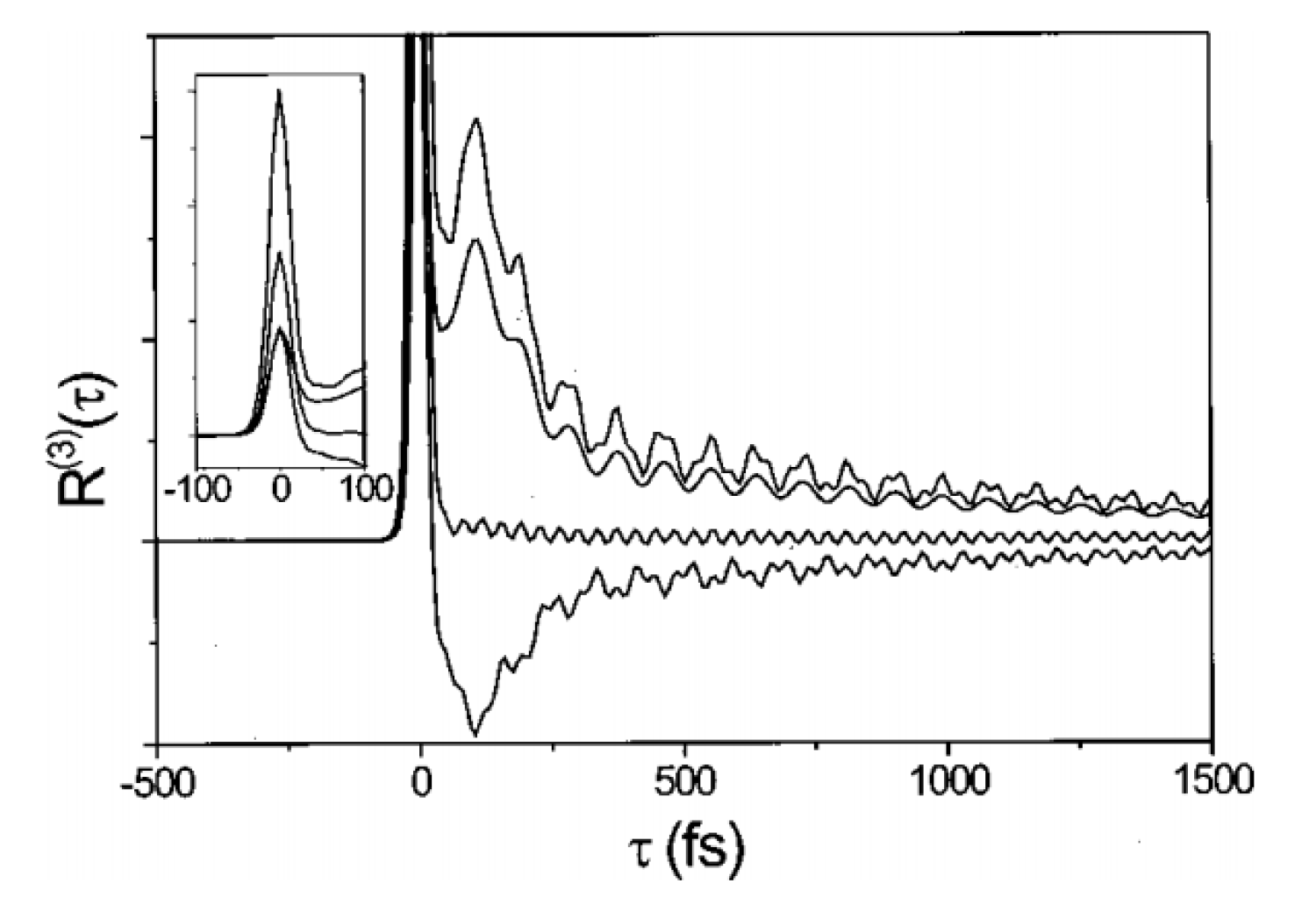Isotropic and anisotropic Raman scattering from molecular liquids measured by spatially masked optical Kerr effect spectroscopy

Spatially masked optical Kerr effect (SM-OKE) spectroscopy is a nonresonant femtosecond pump–probe technique capable of measuring isotropic contributions to the transient birefringence of molecular liquids. In conjunction with traditional optical-heterodyne-detected optical Kerr effect spectroscopy, polarization-selective SM-OKE measurements are used to experimentally measure the anisotropic and isotropic third-order nonlinear response of acetonitrile, methanol, and water. These two responses, which allow the intermolecular dynamics to be separated by symmetry, form a complete and independent basis for describing the polarization dependence of nonresonant third-order experiments. The Fourier transform spectral densities of these responses are presented for each liquid and are interpreted in terms of the molecular and interaction-induced contributions to the many-body polarizability. The molecular contributions are suppressed in the isotropic response for all liquids, while the line shape in the interaction-induced portion of the spectra varies with the liquid. For the non-hydrogen-bonding liquids, the isotropic line shape is similar (albeit suppressed) as compared with that of the anisotropic spectrum, but the high-frequency wing of the isotropic spectrum exhibits completely new features in methanol and water. The isotropic water response is especially notable, since it is exceedingly fast and distinct from the anisotropic response.
Fecko, C. J., Eaves, J. D., and Tokmakoff, A. Isotropic and anisotropic Raman scattering from molecular liquids measured by spatially masked optical Kerr effect spectroscopy. J. Chem. Phys. 117, 1139 (2002)

